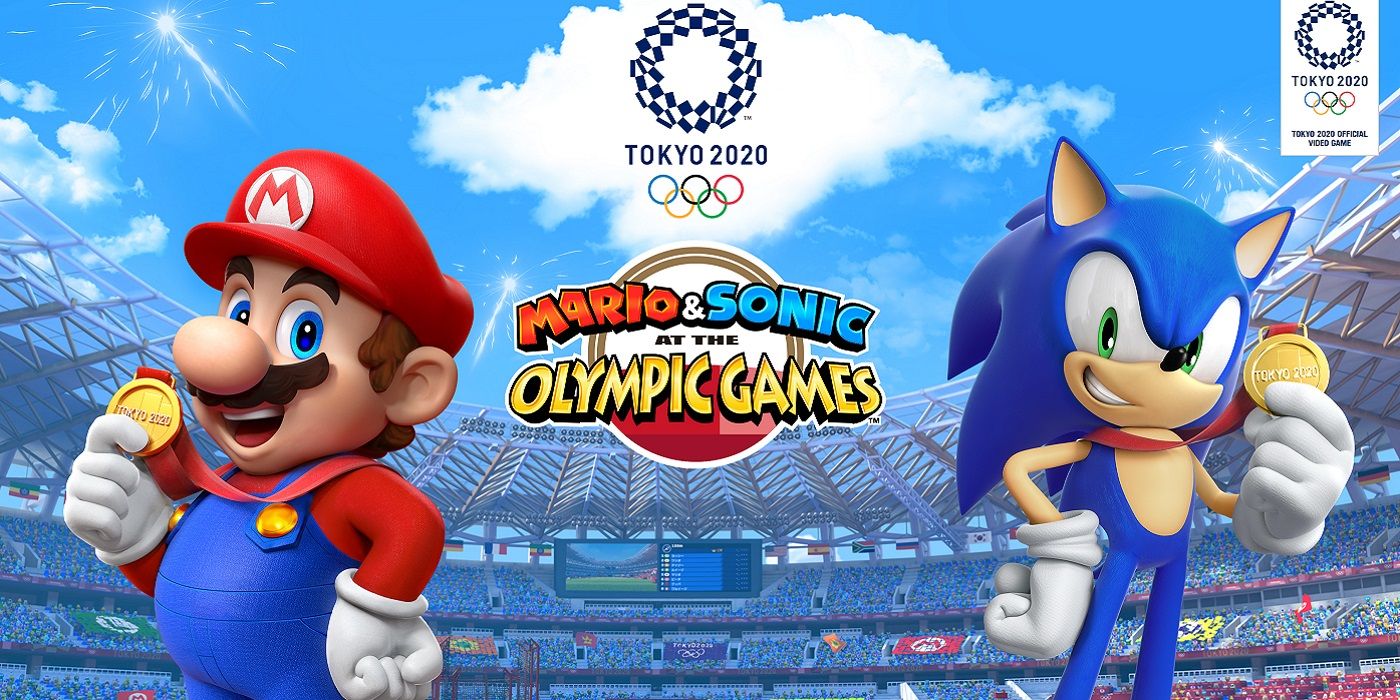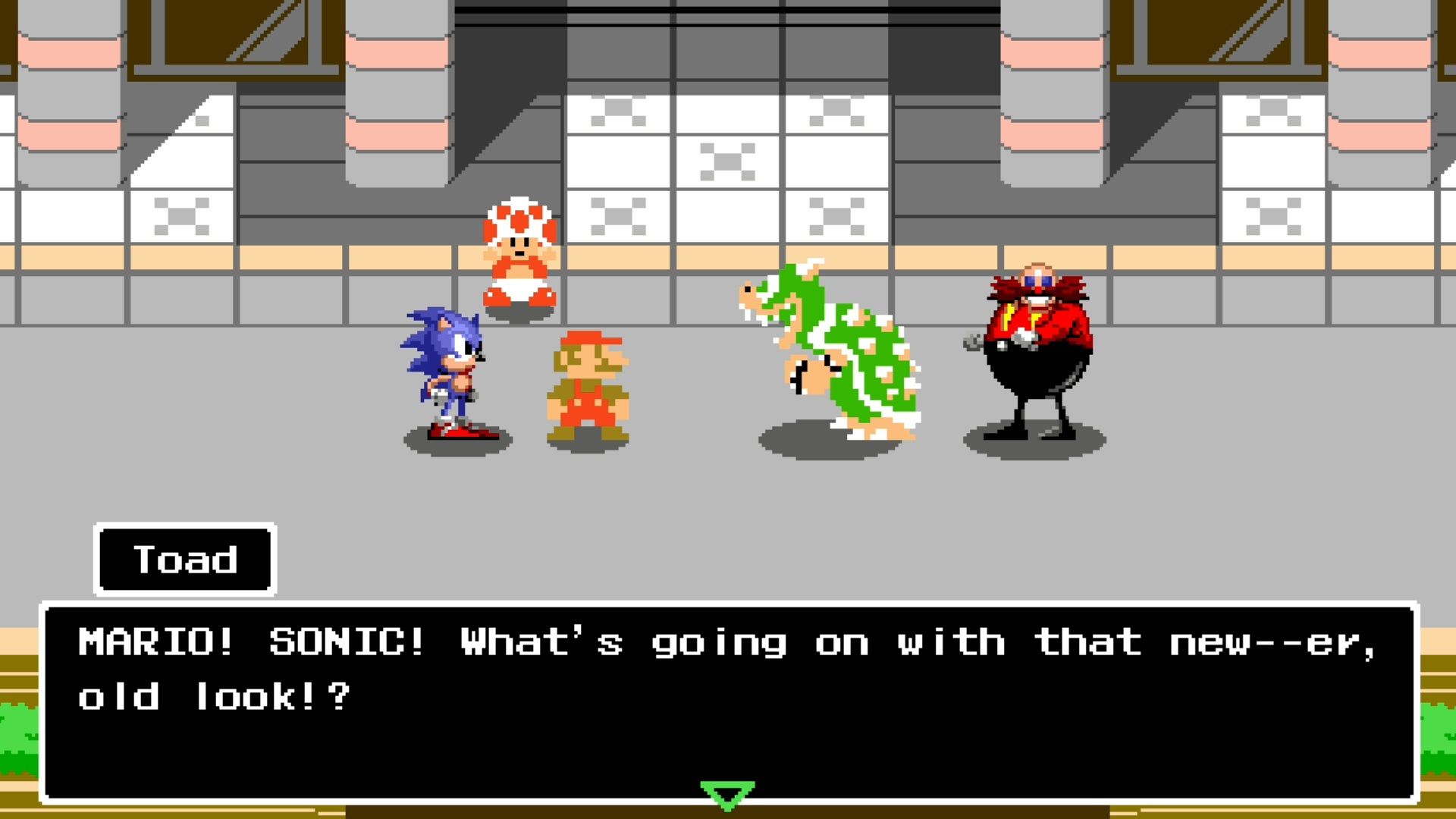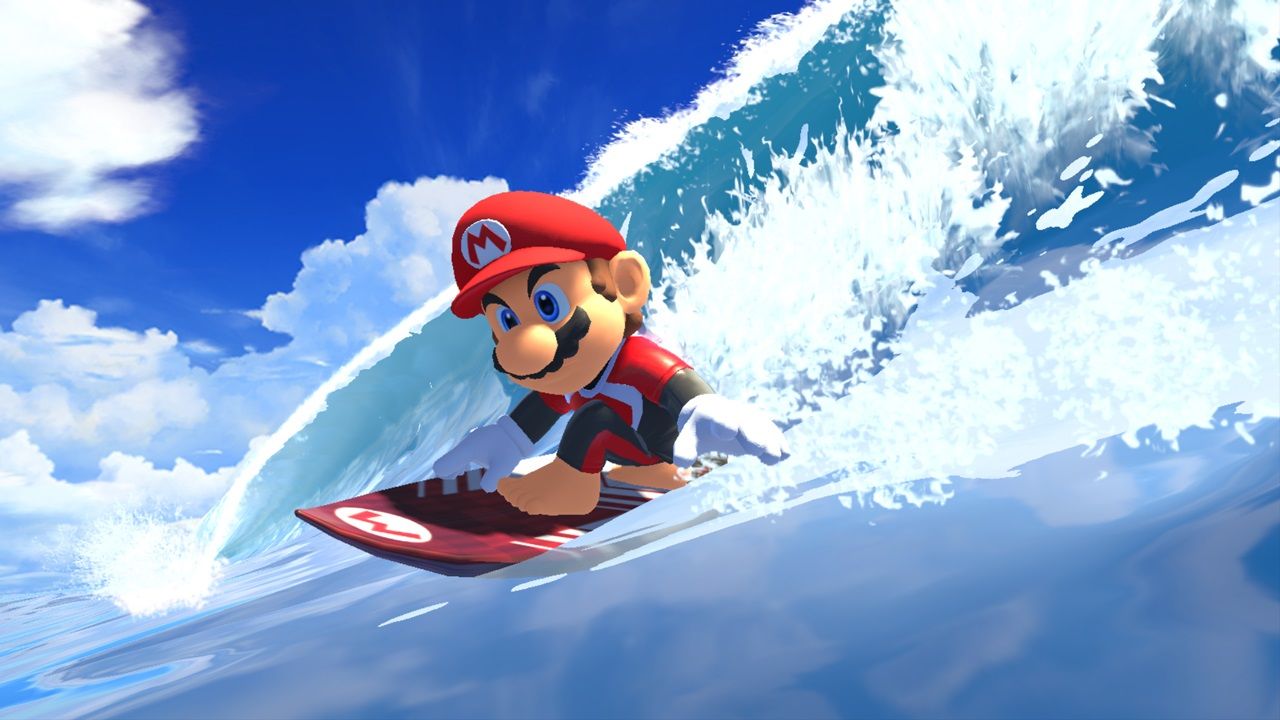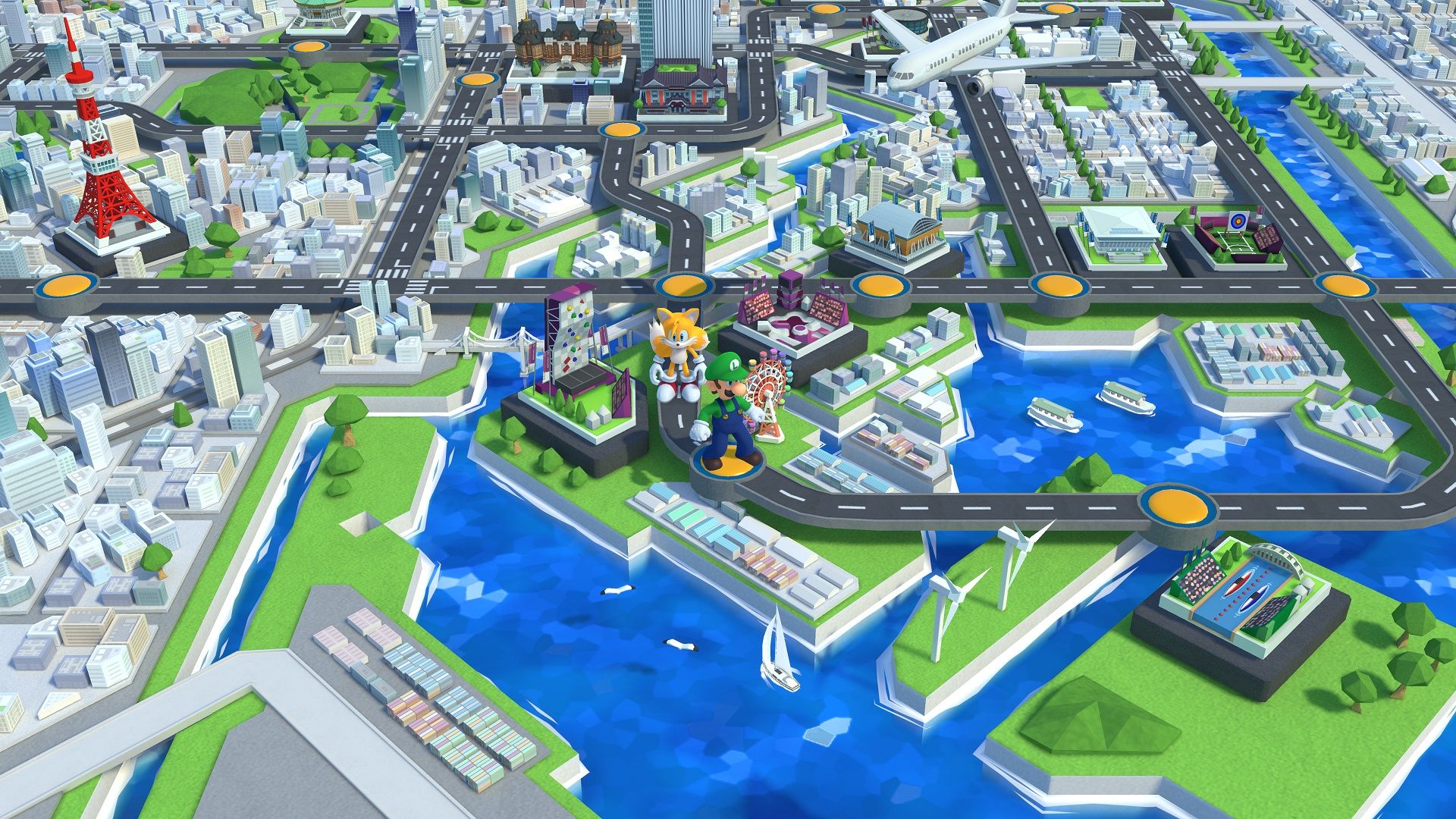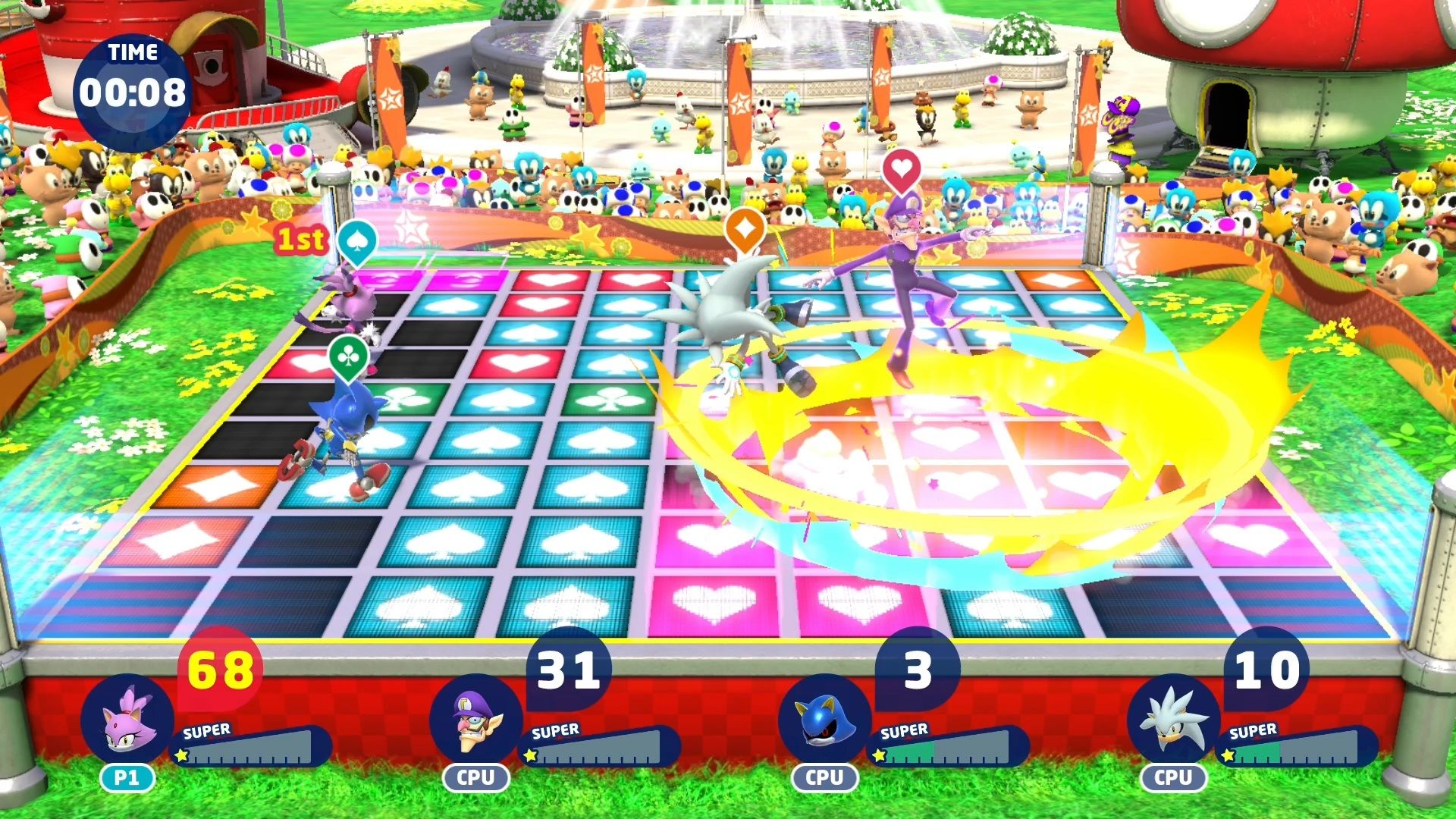The Mario & Sonic series has been consistently releasing new games since 2007, combining characters from Nintendo's Super Mario series and Sega's Sonic the Hedgehog and having them compete in various Olympic events. Tokyo, Japan will be hosting the 2020 Olympic Games, and it too has its own Mario & Sonic game, appropriately titled Mario & Sonic at the Olympic Games Tokyo 2020. This marks the first time that the series has been on the Nintendo Switch, and it's debuting with some innovations, though none of it is enough to really make the game worthwhile.
The big new addition in Mario & Sonic at the Olympic Games Tokyo 2020 is the story mode. With every sports game from FIFA to Madden NFL having story modes nowadays, it's only natural for Mario & Sonic to follow suit. The premise is perhaps a bit more outlandish than the more serious, realistic sports sims, but that makes sense when one considers that the game is about a plumber and a talking hedgehog competing for Olympic gold medals.
The story in Mario & Sonic at the Olympic Games Tokyo 2020 can be pretty funny at times. We found Wendy staring straight at the camera in dialogue scenes to be particularly hilarious, with meme potential that could rival angry Luigi from Mario Kart. Unfortunately, the game's amusing moments are few and far between, and it's more dull than anything else.
The Mario & Sonic at the Olympic Games Tokyo 2020 story is weighed down by excessive dialogue. There is just too much talking in the game, with the characters taking forever to get the point of their conversation, which is always to set up the next sporting event. Players can thankfully skip all of this if they want to, but it begs the question why the developers bothered to put in all this dialogue at all since a lot of it is just everyone talking in circles.
Characters in Mario & Sonic at the Olympic Games Tokyo 2020 mostly talk about what item they need next in their attempt to free Mario, Sonic, Dr. Eggman, and Bowser from a special video game console called the Tokyo 64. At the beginning of the story, these four characters are sucked into the Tokyo 64, which features 2D gameplay and makes them look like their 8- and 16-bit selves. The mix of 2D and 3D admittedly adds some variety, though anyone looking for something as clever or well-made as the 2D segments from Super Mario Odyssey will be sorely disappointed.
8-bit sports games were never all that complicated, and the reason back in the day was due to hardware limitations. These limitations are in place for the 8-bit sections of Mario & Sonic at the Olympic Games Tokyo 2020, so most of the 2D mini-games amount to little more than button mashing.
The 3D mini-games are far more interesting than their 2D counterparts, with players often given the choice between using a traditional control scheme with buttons or using motion controls. Many of the mini-games in Mario & Sonic at the Olympic Games Tokyo 2020 are clearly designed with motion controls in mind, though they don't always work. Anything to do with aiming we found to be a particular struggle, with the Archery event flat-out annoying to play using motion controls. It's a good thing that traditional controls are almost always an option for players, as forcing motion controls on everything would have made some events borderline unplayable.
Most of the mini-games in Mario & Sonic at the Olympic Games Tokyo 2020 are self-explanatory, but there are some that are needlessly complicated. The developers added a bunch of gimmicks to some of the mini-games that force players to remember very specific things when playing each one. This hurts the game's pick-up-and-play potential.
When players aren't busy playing mini-games and having drawn-out conversations, they can explore the overworld in story mode, but they won't find anything worth doing. The overworld map in Mario & Sonic at the Olympic Games Tokyo 2020 has nothing going on, with players using it just to move from one event to the next. They can talk to people if they want, though no one has anything interesting to say and there's enough talking in the cut-scenes already. Players can also collect Olympic Games trivia questions from the overworld, and while some people may find the factoids interesting, they're unlikely to motivate most players to do much exploring.
The overworld is also hindered by how the game swaps between different control schemes. For example, if players decide to use motion controls for the Table Tennis event, one of their Joy-Con controllers will shut off since it only requires one to be active. That's all fine and good, but when players go to explore the overworld again, they will find that the directional controls have been swapped around and their other Joy-Con is still off. This can be fixed pretty easily, but it can still be frustrating, especially if players find themselves having to reactivate the correct Joy-Cons frequently.
Mario & Sonic at the Olympic Games Tokyo 2020 has some other annoyances as well, including the repetitive music, the inability to see requirements to complete the Challenges (essentially the game's version of achievements), and certain story mode events. The worst level is easily Museum Sneak, which is a 2D stealth section that isn't hard, but just requires a lot of patience and standing around, so it becomes agonizingly boring.
However, not everything about Mario & Sonic at the Olympic Games Tokyo 2020 is bad. The game's graphics are rather impressive and it runs very well, with us running into zero glitches during our time with it. There are also special Dream Events that have a little bit more to them than the regular mini-games without having overly complex controls, though we wish that they had more stages.
Dream Events are special mini-games that aren't based on an Olympic sport. For instance, there's a racing one that plays almost like a blend of Mario Kart and the racing mini-games from Sonic Adventure 2, complete with power-ups and rail grinding. There's also Dream Karate, where players have to attack opponents to fill out a board with their symbol, and Dream Shooting, which is a third-person shooter where players run around an area and shoot targets. Players won't feel compelled to play almost any of the other mini-games again after trying them once, but these Dream Events can be a fun time with the right people.
Mario & Sonic at the Olympic Games Tokyo 2020 looks good and does offer some fleeting moments of fun with the Dream Events, but most everything else about the game falls flat. It's consistently dull and its new ideas fail to make it any more compelling than previous games in the series. Nintendo Switch owners have plenty of other quality games to play, and so there's not really any reason to bother with Mario & Sonic at the Olympic Games Tokyo 2020.
Mario & Sonic at the Olympic Games Tokyo 2020 is out now for the Nintendo Switch, with an Arcade release coming in 2020. Game Rant was provided with a Switch code for this review.
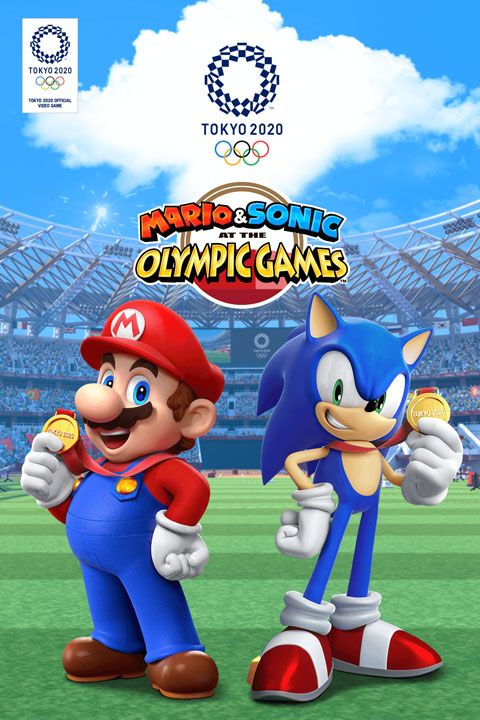
Mario & Sonic at The Olympic Games Tokyo 2020

